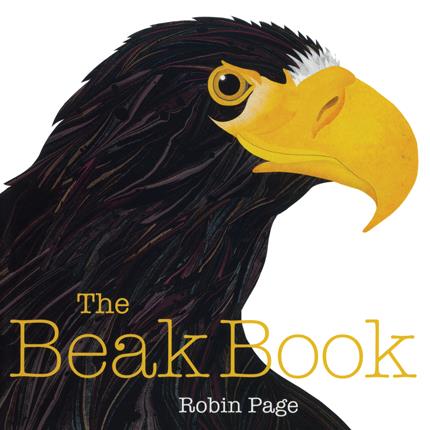| Beak book Author: Page, Robin | ||
| Price: $23.98 | ||
Summary:
A non-fiction exploration of the different kinds of beaks birds have and what they use them for.
| Accelerated Reader Information: Interest Level: LG Reading Level: 4.40 Points: .5 Quiz: 510663 |
Reviews:
School Library Journal (12/01/20)
Booklist (12/01/20)
Full Text Reviews:
School Library Journal - 12/01/2020 K-Gr 2—Young readers who are curious about birds from around the world will enjoy Page's latest offering, which provides a colorful and informative look at one unique feature of a bird: its beak. Whether a bird is using its long beak to sniff out food like a kiwi, its curved beak to climb up a branch like a macaw, or its large beak to keep cool in warmer temperatures, a bird's beak plays an important role. The text, which follows the pattern "This beak is for..," uses a larger type to emphasize the beak's particular function. Simple, declarative sentences make this ideal for read-alouds or for readers who are just starting to read independently. Vibrant, textured illustrations not only show the bird up close but also depict the action described in the text. Captions provide further information, although the text is written at a higher reading level than the main text. The back matter includes a map of birds mentioned in the book, as well as additional sources. Page shows that despite their differences, all birds use their beaks to start life in the same way: by breaking out of their shell. VERDICT This detailed overview would be an excellent choice for collections that are looking for additional titles about birds.—Louie Lauer, Jefferson Elem. Sch., Fargo, ND - Copyright 2020 Publishers Weekly, Library Journal and/or School Library Journal used with permission.
Booklist - 12/01/2020 “Beaks come in many different colors, shapes, and sizes,” says the opening text of this attractive, fact-filled look at the tool birds use to sniff, crush, snap, and more. Page introduces each bird by the activity its beak is used for and pairs that with a large, digitally created, collage-like image of the bird’s head and upper body, accompanied by a smaller illustration of the whole bird at work with its beak. The beautifully colored ruddy duck, for example, has a distinctive blue bill, which is used for straining plants and animals from the bottom of a pond. Readers can learn layers of information here—where the birds live, how they eat and otherwise interact with their environments, and some useful vocabulary. The succinct text accompanying each animal is just enough to hold young readers’ interest, while the fabulous images, the style of which will be familiar to readers of Page and Steve Jenkins’ Caldecott Honor title What Do You Do with a Tail Like This?, offer plentiful details to pore over. Engaging nonfiction for the picture book set. - Copyright 2020 Booklist.



